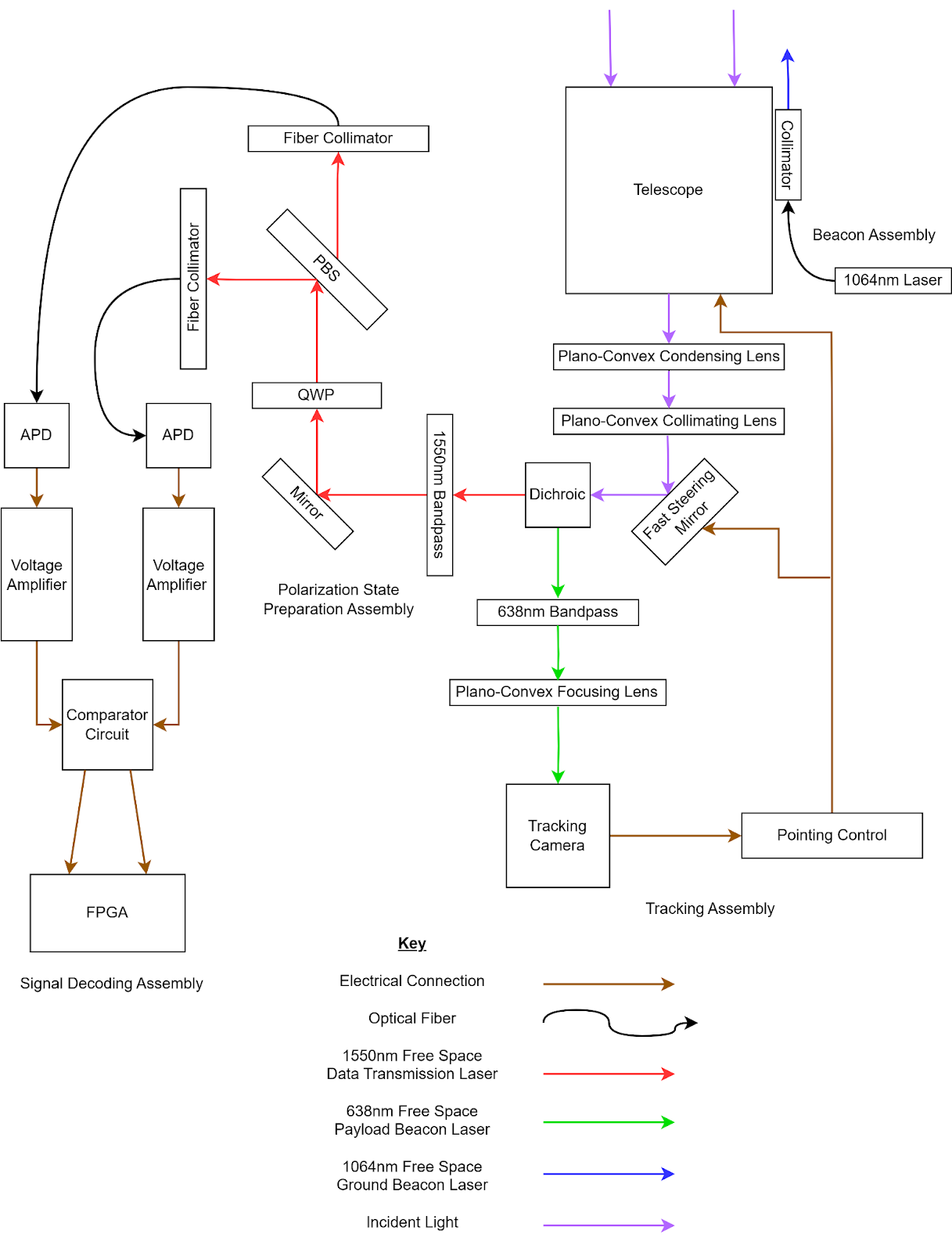Optical Ground Station
To perform satellite-to-ground optical communications, the OGS needs to track, receive, and decode the transmitted signal. Simultaneously, it must provide its own beacon at a wavelength of 1064 nm in order for the satellite to be able to track the OGS. The satellite’s Payload transmits two beacons: a 1550 nm transmission laser and a 638 nm beacon laser. This three-laser system is at the core of PULSE-A’s design.
In order for the OGS to function as a receiving terminal for polarization-based optical communications, it must satisfy the following requirements on pointing, tracking, and decoding laser transmissions:
-
The OGS shall transmit the ground station laser beacon to the satellite.
-
The OGS shall point to the satellite.
-
The OGS shall track the Payload beacon laser.
-
The OGS shall detect the downlink transmission laser’s wave packets as bits based on separated polarization states.
-
The OGS shall decode the downlink transmission laser into digital data.
These system requirements are accomplished by four assemblies within the OGS: Tracking, Polarization State Preparation, Signal Decoding, and Beacon.
The OGS design diagram is below.
